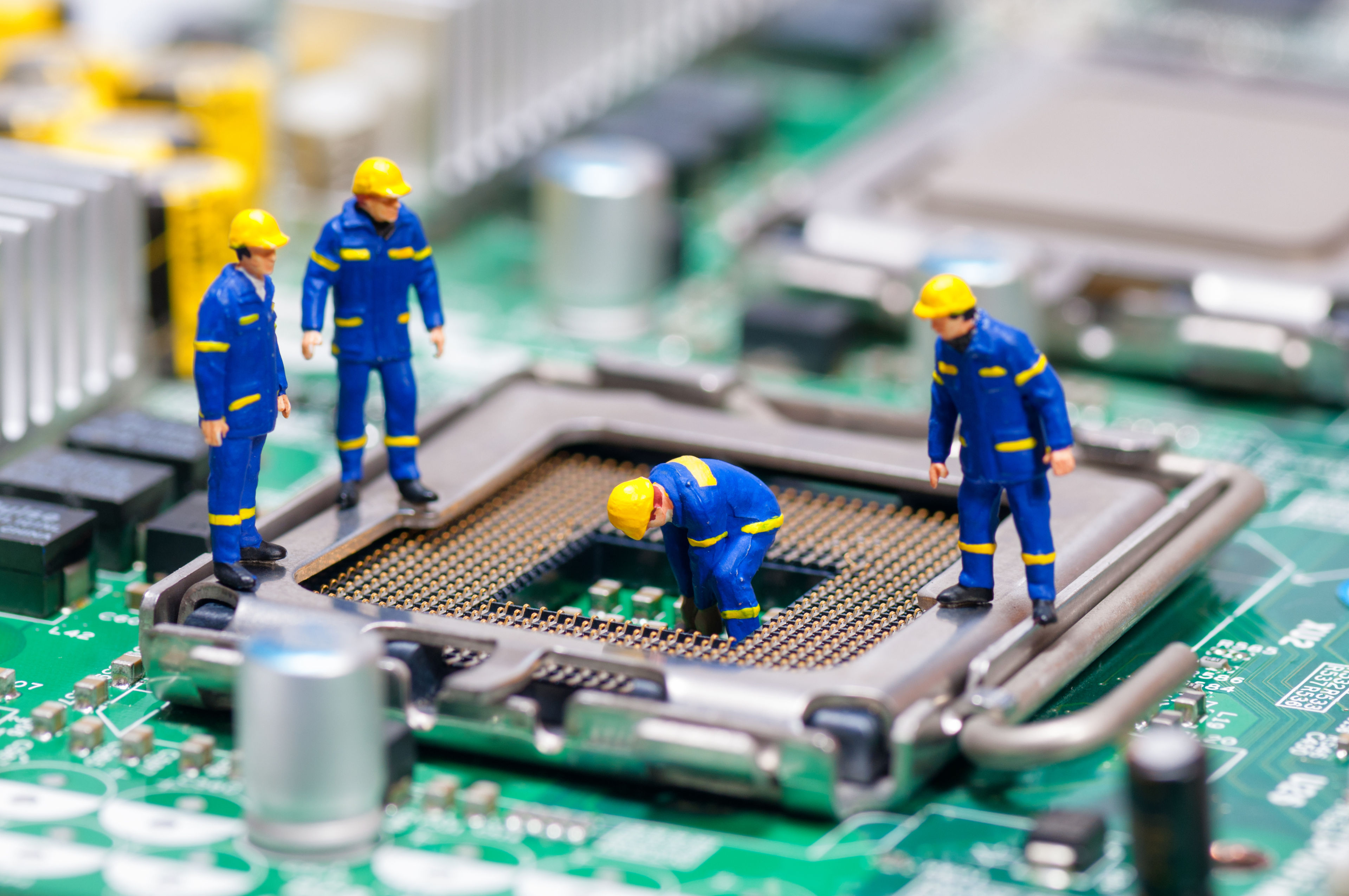Understanding Processors
- Type of use, basic browsing the web to high end CAD/Video editing?
- Type of user, determine size and weight they would prefer?
- Environment, will the system be subjected to a lot of handling and require a sturdy construction?
- Options such as number of USB ports, docking station and CD drive?
- Budget, to determine what compromises need to be made to find the best fitting system.

Faster is always better?
Not always and in this quick guide to Intel processor numbering we try to explain why newer and faster isn’t always best suited to the use of your new computer.
Processor Codes
Gone are the simple days where processors increased in speed, rated in Herts, Mega Herts MHz and then Giga Herts GHz. However the speeds could no longer continue to grow as various boundaries had been met in terms of power consumption and heat generation.
So became the technique to run several processors in a single chip, allow individual cores to stay dormant to reduce power consumption and allow each processor to operate at slower speeds to reduce heat and by doing so kept processors within the limits of cooling and battery technology.
Processor cores today rarely exceed 4GHz, most typically we sell machines with speeds rated at 2.2-3.4GHz and have been for some time now.
Processors had to become smarter, optimised for the specific application they were destined for and therefore we welcome you to the complex world of processor codes.

Brand
Whilst we do from time to time sell AMD processors our main focus is on Intel and their range of Core series processors.
Intel has many brands within its range including but not limited to:
- Atom
- Pentium
- Celeron
- Core
- Xeon
Model
Within the Intel Core range of processors there are three main models the i3, i5 and i7 with a couple of extra less known processor models:
- 2
- M – Optimised for Mobile
- i3 – Entry Level
- i5 – Main Stream
- i7 – High End
The boundaries between the major headline features of the processors gets blurred as features once limited to the higher end models gets adopted by the lesser versions.
The main key differences are hyperthreading, turbo boost, cache size and number of cores.
As a rule of thumb Core i3 has two cores, i5 can vary between 2 cores on processors aimed at mobile devices and 4 on desktop devices (but some laptops come fitted with desktop processors to further confuse things) and i7 have four cores.
Generation
This is likely the greatest sales tactic used by high street shops selling cheap laptops with an amazing sounding specification. They’ll headline the fact the cheap laptop on offer comes with an Intel Core i5 processor but what isn’t so apparent is that it is often a much older generation of processor.
Each generation looks similar to the previous ones, processor speeds don’t really increase as they used to. Performance and power consumption improvements are now made by specialist areas in the chip that optimise certain types of code and this leads to significant increases in performance.
As a result of improved fabrication where the silicon wafer becomes thinner heat and power consumption is reduced and performance is improved as production techniques and equipment advance.
Our testing here of two roughly equivalent but one with a single generation newer processor shows almost a double in performance between a 5th Gen and 6th Gen processor when it comes to graphics and disk performance.
These are the generations of Intel processor, their code names and year of introduction.
- Bloomfield (2008)
- Lynnfield (2009)
- Gulftown (2010)
- 2nd Gen: Sandy Bridge (2011)
- 3rd Gen: Ivy Bridge (2012)
- 4th Gen: Haswell (2013)
- 5th Gen: Broadwell (2015)
- 6th Gen: Skylake (2015)
- 7th Gen: Kaby Lake (2016)
Future:
- 8th Gen: Coffee Lake (2017)
- 9th Gen: Cannon Lake (2018)
- 10th Gen: Comet Lake, Ice Lake and Amber Lake (2020)
- 11th Gen: Tiger Lake (Q1 2021)
- 12th Gen: Alder Lake (Q2 2022)
- 13th Gen: Raptor Lake (Q4 2022)
7th generation processors launched late 2016 are now appearing on many product announcements from manufacturers. Lenovo have announced several new ranges of system based on Kaby Lake 7th generation processors which have product numbering ending **70, such as the T570, L570, E570 and so on.
The vast majority of systems on sale today for consumers will feature processors from one to two generations older than the latest and greatest.
Variation Suffix
Finally some specialist revisions of processors are created, typically aimed at laptop users.
- K – Unlocked
- T – Power Optimised for Lifestyle
- H – High Performance Graphics
- Q – Quad Core
- U – Ultra Low Power
- C – High Performance Graphics
- R – High Performance Graphics
- Y – Extremely Low Power
- S – Performance Optimised for Lifestyle
- M – Mobile
- X – Extreme Edition
- E – Energy Efficient with TDP greater than or equal to 55W
Processors can have one or more of these letters affixed, such as a QM for a quad core mobile processor.